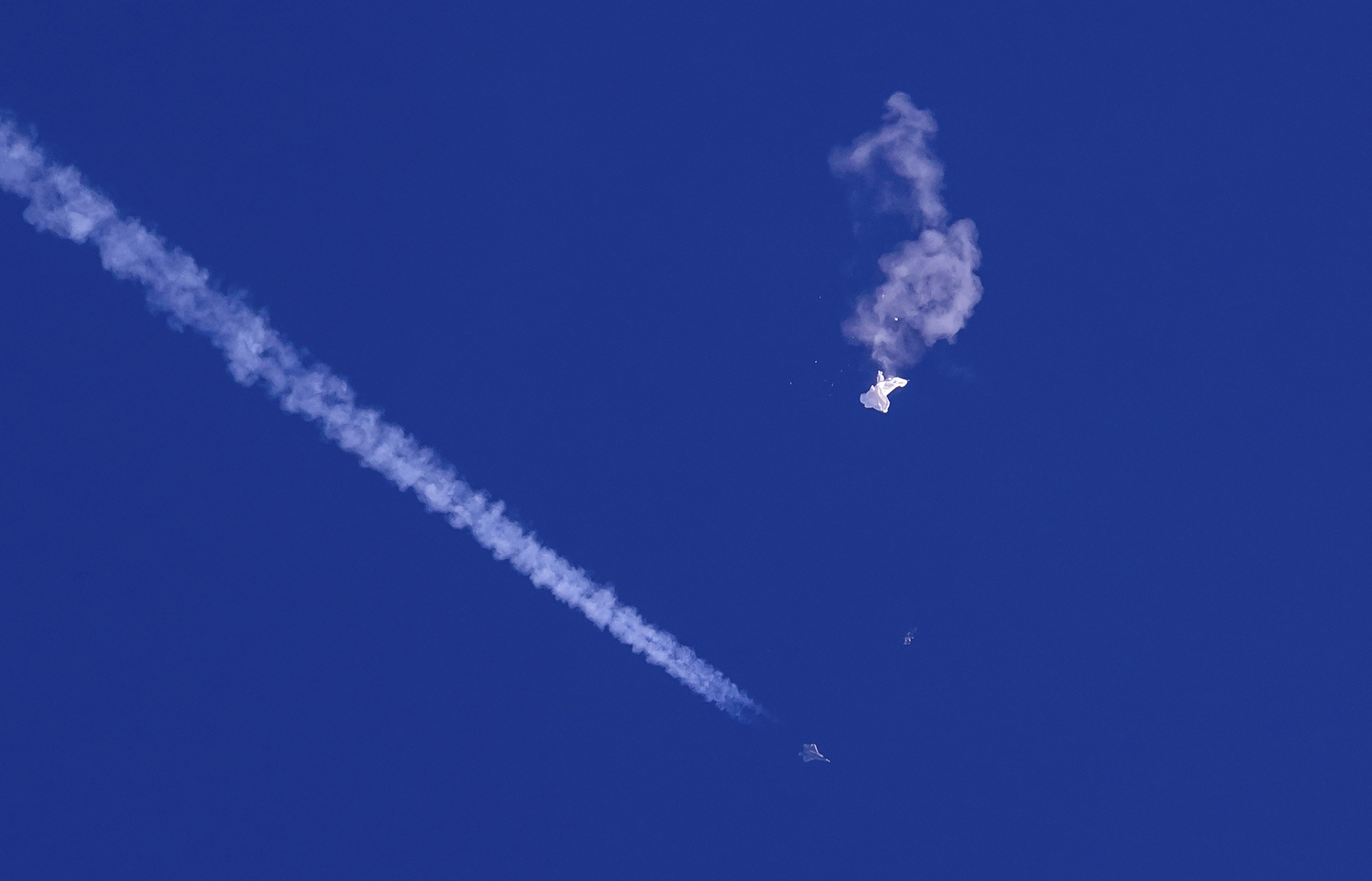
During his tenure Chinese President Xi Jinping, China has invested hundreds of billions of dollars to modernize its military power, from nuclear missiles to hypersonic gliders.
As it turns out, this gigantic investment also included spy balloon technology, it will cover the needs on the new front of militarization, in the near future.
But what exactly do we know about this flying contraption, which the Americans thought was just another sign of Beijing’s increasingly aggressive multi-year spy campaign?
What do we know so far?
Beijing claims that the airship, the size of a small passenger plane, was a weather balloon flying in the wrong direction. Washington, through the mouth of its president, claims that he “gathered information about America.”
According to a State Department spokesman, high-resolution images taken by American spies revealed spy equipment “capable of picking up communications signals.” The balloon flew over important military targets, and its small engine and propellers indicate that it could be controlled.

A week later, during which the balloon crossed North America, a US Air Force F-22 Raptor shot it down off the coast of South Carolina.
Navy and Coast Guard officials went to the crash site to salvage the wreckage of the airship from a relatively shallow depth.
In the following days, at least four more flying objects of unknown origin and destination were shot down.
Why balloons?
Cheap, silent and hard to detect and shoot down balloons have been used in reconnaissance flights for many years. U.S. officials told Bloomberg today that they have limited ability to collect meaningful data beyond what the Chinese can already collect through their network of satellites.
However, they can photograph objects from different angles and, compared to satellites, have the ability to hover over objects of interest for longer periods of time.
They can also be deployed suddenly, leaving little time to protect sensitive information, and often have infrared sensors that provide information other than satellites.
What about Chinese espionage in the US?
The US and its allies accuse China of ramping up espionage and influence operations and recruiting spies, scientists, whistle-blowers and even entire companies to provide access to cutting-edge research and technology.
In 2020, following the conviction of two Chinese men for attempting to steal trade secrets, the US State Department ordered the closure of the Chinese consulate in Houston, the US energy capital.
In 2021, a former Harvard chemical biology professor was convicted of covering up his ties to a Chinese recruitment program.
And then President Biden, continuing the policy of his predecessor Donald Trump, continues to deny visas to thousands of graduate students and researchers who allegedly have ties to China’s military academies.
What is China for?
China has called the espionage allegations slanderous, insisting that it is not the aggressor but the victim of cyberattacks and aggressive behavior by the US and its allies.
A Chinese foreign ministry spokesman complained Sunday that U.S. balloons have “illegally” flown over the country at least ten times since last year.
And this is not the first time that China has complained about spy boats and planes near its territory, claims that sometimes provoke confrontations. After all, he described the US as “the number one country in the world for espionage, wiretapping and monitoring.”
Who is coordinating Chinese intelligence?
The Ministry of State Security is the main intelligence agency of the country, carrying out, among other things, foreign espionage, domestic counterintelligence and cyber espionage operations.
The number of employees is kept under wraps, as is its headquarters, which is reportedly located in an unidentified building in western Beijing.
It has neither a press service nor a website.
Its former head, Chen Wenqing, was appointed to the Politburo and Central Secretariat in October last year and became the first intelligence chief to pass through the internal political circles of the Communist Party since the ministry was founded in 1983.
How effective is Chinese espionage?
According to international media reports, this question is difficult to answer, as only assumptions and denials have been made.
In 2018, the New York Times reported that Chinese and Russian spies tracked Trump’s calls on unsecured mobile devices, which the former US president called false.
The Times reported in 2017 that Chinese authorities had been winding down CIA operations in China for years, killing at least a dozen of its sources in what US officials said was one of the “most brutal crackdowns on espionage operations”.
In 2018, Australian media outlets Fairfax Media and Nine News reported that China’s Ministry of State Security was responsible for a series of attacks on Australian companies despite a bilateral agreement to protect trade secrets.
In 2022, a senior official in the same ministry was sentenced to twenty years in US prison for attempting to steal trade secrets from Western aerospace companies.
How concerned is the US?
In 2022, the US Office of National Intelligence’s annual threat assessment ranked China at the top of its list along with Russia, Iran and North Korea. He even warned of China’s ever-growing military power, including its nuclear arsenal, calling the country the “prime threat” to American technological competitiveness. He also described it as “the most pervasive and persistent cyber-espionage threat” to government and private sector networks.
At the same time, the US is developing its own high-altitude balloons to add to an already extensive surveillance network, Politico reported last year, citing Pentagon documents.
Source: Bloomberg.
Source: Kathimerini
Anna White is a journalist at 247 News Reel, where she writes on world news and current events. She is known for her insightful analysis and compelling storytelling. Anna’s articles have been widely read and shared, earning her a reputation as a talented and respected journalist. She delivers in-depth and accurate understanding of the world’s most pressing issues.